Stories about weapons. 160 mm division mortar M-160 1949 model year
Strange all the same, the human brain is arranged. It is worth mentioning the name of Stalin in any article, how a dispute immediately begins about the personality of this person and his role in stories USSR and the world in general. At the same time, it doesn’t matter what the article is about. Today I will deliberately start precisely about Stalin, more precisely, about his role in the mortar case.
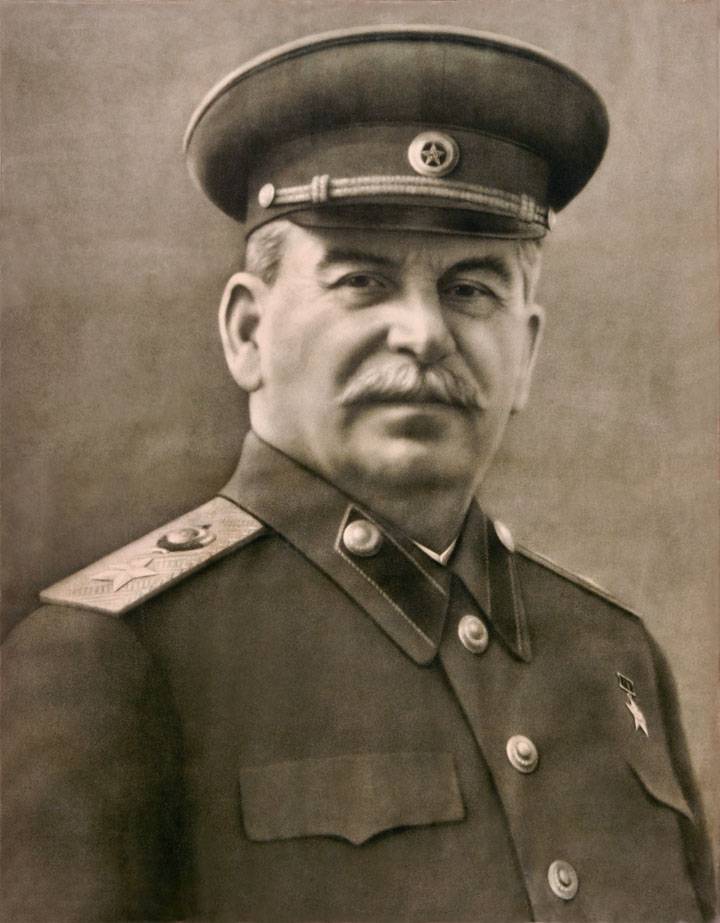
"There is no modern war without mortars, mass mortars. All corps, all companies, battalions, regiments must have mortars, 6-inch necessarily, 8-inch. This is a scary need for a modern war. It is very effective mortars and very cheap artillery. A wonderful thing mortar. Not to regret the mines, this is the slogan, to pity your people. If you pity bombs and shells, do not pity people, fewer people will. If you want the war to be with little blood, do not pity the mines. "
This is not a press release. This is not a speech at a rally or congress. This is not a general statement intended for publication at a secret meeting of the commanding staff to summarize the experience of hostilities against Finland 17 on April 1940. Therefore, not very well known to the general reader.
Even then, after a not very successful military campaign, the USSR seriously thought about creating large-caliber mortars. A mortar as the "pocket artillery of the infantry" became really a special kind of artillery. The opinion of I. V. Stalin was then heard by many designers and factory directors.
Immediately, four design bureaus of various factories began the development of large-caliber mortars. And the main gauges of steel immediately 160 mm and 240 mm. But the work on large-caliber mortars was not a "Stalinist order." Rather a wish. Without any privilege or special responsibility for the breakdown.
One important detail should be noted. There were no limitations on the mortar design. Therefore, the projects that were periodically presented by the designers differed quite dramatically. It is enough to list some of the projects that are best known. For some, even prototypes were created and field tests were carried out.
Dulnozaryadny smooth-bore 160-mm divisional mortar "7-17", 160-mm divisional mortar EC-3, 160-mm divisional mortar of the Kukushkin system (barrel almost 2 m, weight of mines 40 kg), X-XHHX-XMX-XXXXXXXXXXXXXXX, X-XXX-X-XXXX-mm ..
Stalin closely watched the testing of new types of mortars. I came to see the most successful ones personally. It was Stalin’s “personal acquaintance” with one of the mortars that led to the appearance on the Soviet-German front of the most powerful mortar of World War II, 160-mm MT-13. "Daddy" hero of our article.
We will not describe the mortar MT-13. Suffice to say about the psychological impact of this. weapons on the Germans. Often, during the shelling of these mortars, the enemy declared an air-raid alert. And in the battles for Berlin, the MT-13 proved to be a terrible weapon of destruction. It is enough that when a mine hit the roof, it “fell” down the 2-3 floor and was torn there.
Despite the fact that the mortar was produced quite a short time, from 1944 to 1947 years, 1557 copies of this weapon were produced. Despite its age, mortars are still in service in some armies of Southeast Asia.
Already in 1945, the designers were given the task of modernizing the MT-13 mortar. In the summer of 1945, the mortar MT-13D was introduced. At the same time, his direct rival-mortar SKB-21 of Kolomna SKBA under the direction of B. I. Shavyrin was tested.
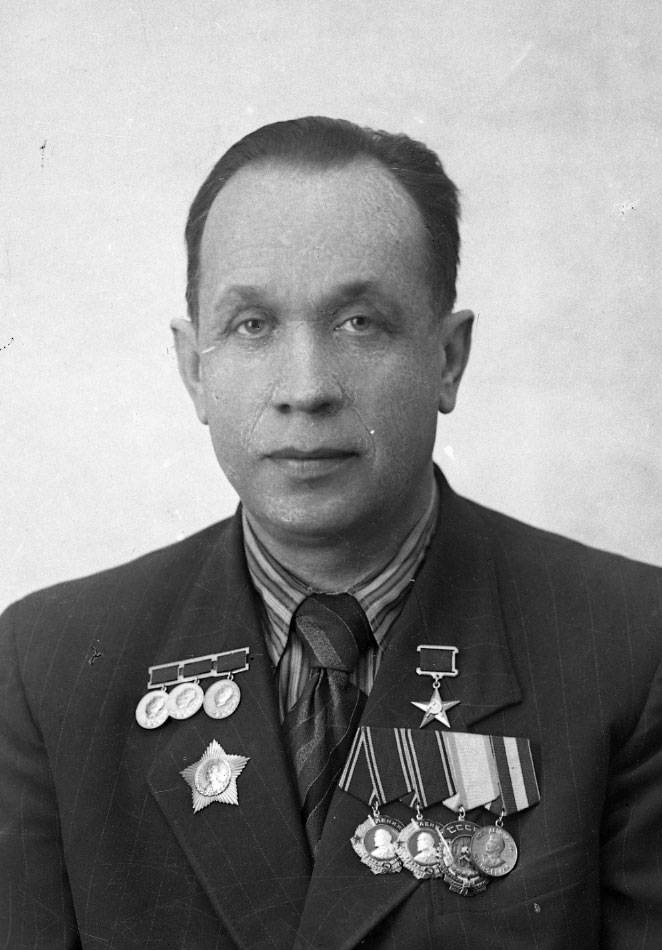
During the tests, it turned out that SKB-21 has a greater range of fire and is more unpretentious in operation. Thus, it was decided to launch SKB-21 into the series. It was this mortar that received the name 160-mm divisional mortar M-160 rev.1949 of the year. The MT-13D was released only by the experienced series in the 4 units.
So, the Soviet 160-mm divisional mortar M-160 model 1949 of the year - large-caliber artillery breech-loading system, which entered service with the Soviet motorized rifle divisions.
The main purpose of the weapon is the destruction of well-fortified long-term and field fortifications in the front line, the accumulation of manpower and military equipment of the enemy in closed positions. The main striking effect is achieved by firing on a steeply hinged trajectory and using high-powered mines.
The 160-mm M-160 mortar is a tough (without recoil), breech-loading smooth-bore system on a wheel drive. Recoil when fired is perceived by the ground through the base plate. To reduce the destructive effect of the forces arising from the shot, the mortar has a spring shock absorber.
The mortar consists of the following main parts: a barrel with a bolt, a breech with a shock absorber, a machine with turning and lifting and counterbalancing mechanisms, booms with a winch and a wheel course, a support plate, a pivot foot and a sight.
The barrel is a smooth-wall pipe, fixed in the trunnion holder, pivotally connected to the shock absorber.
Wheels of the course are filled with spongy rubber. Suspension of the spring-type mortar, when firing does not turn off.
The base plate is stamped; It is designed to transfer to the ground the force of recoil of a mortar when fired.
The paw is attached to the muzzle of the trunk; it serves to connect the mortar with the hook of the tractor during transport.
The mortar is equipped with a panoramic-type MP-46 optical mortar sight, which is fixed in the bracket of the sight leveling mechanism.
Loading the mortar is made from the breech, for which the barrel is in the position for loading (approximately in the horizontal position) and is held steady.
Mortar firing is done with a high-explosive mine F-852 with fuse GVMZ-7. The fuse has installations for fragmentation and high explosive action. The weight of the final mines (with the fuse) 41,14 kg. Combat charge consists of full variable, long-range and igniter charges.
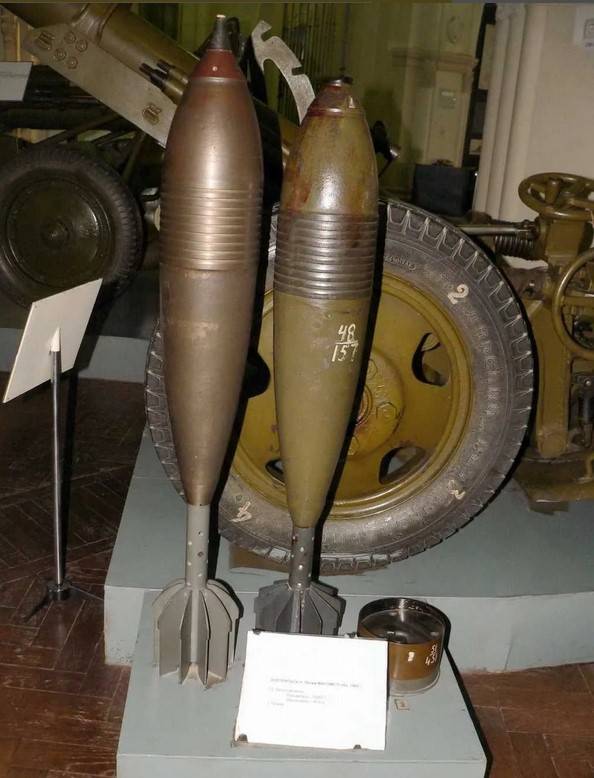
The device mines were similar to the usual 82-mm and 120-mm Soviet mines. The twelve-type 160-mm high-explosive mine F-852 weighed 40,865 kg and contained 7,78 kg of explosive charge. Fuse head gVMZ-7.
The principal difference between a mortar shot and all other domestic mortars was a short sleeve into which a mine stabilizer was inserted. The sleeve was introduced for the obturation of powder gases when fired.
The total variable charge consists of an igniter charge and three additional equilibrium beams. A long-range charge consists of an igniter charge and a special additional beam. The igniter charge is inserted into the mine stabilizer tube.
Additional beams of both alternating and long-range charges are attached to the stabilizer tube using cords. From the full variable charge with one, two or three additional beams, the first, second or third charge numbers are collected, respectively.
Basic data of X-NUMX mm mortar M-160:
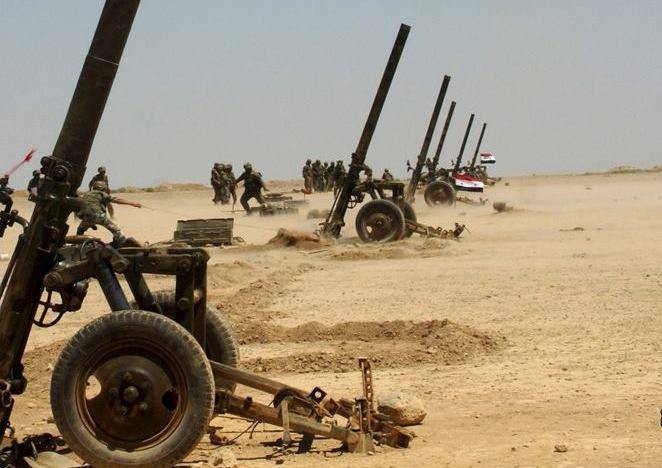
Ballistic data
Caliber - 160 mm;
The longest firing range - 8040 m.
The smallest firing range - 750 m.
The initial speed of the mine is the greatest - 343 m / s.
The initial speed of the mine is the lowest - 157 m / s.
Weight data
Mortar weight in the combat position - 1300 kg.
The mortar weight in the stowed position - 1470 kg.
Baseplate Weight - 260 kg.
The weight of the final mines - 41,14 kg.
Construction data
The largest elevation angle of the trunk is 80 °.
The smallest elevation angle of the trunk is 50 °.
Rate of fire - 3 shot per minute.
Calculation - 7 people.
Mortar was transported by towing GAZ-63 and ZIL-157.
Currently, M-160 mortars are in service with several armies in the world. Despite the fact that the serial production of M-160 divisional mortar was deployed in two plants (Plant No. 535, and from 1952 of the year - Plant No. 172) for the entire production period (production discontinued in 1957 year), the entire 2353 was released.
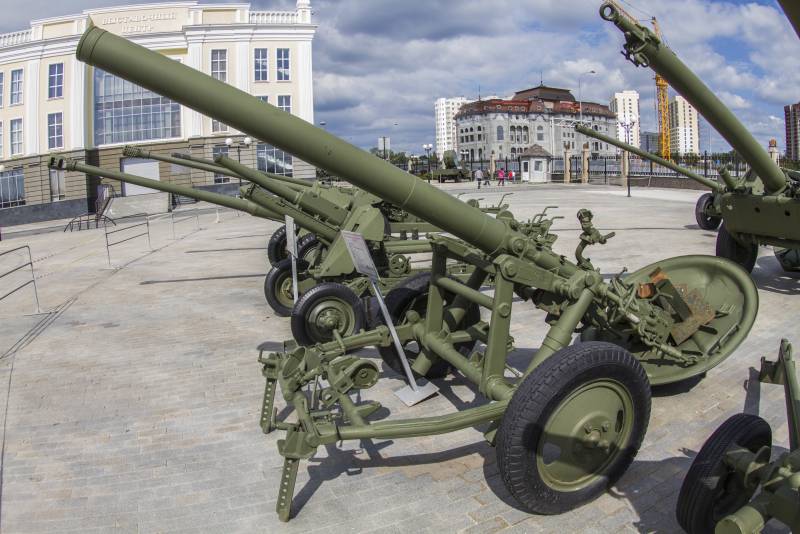
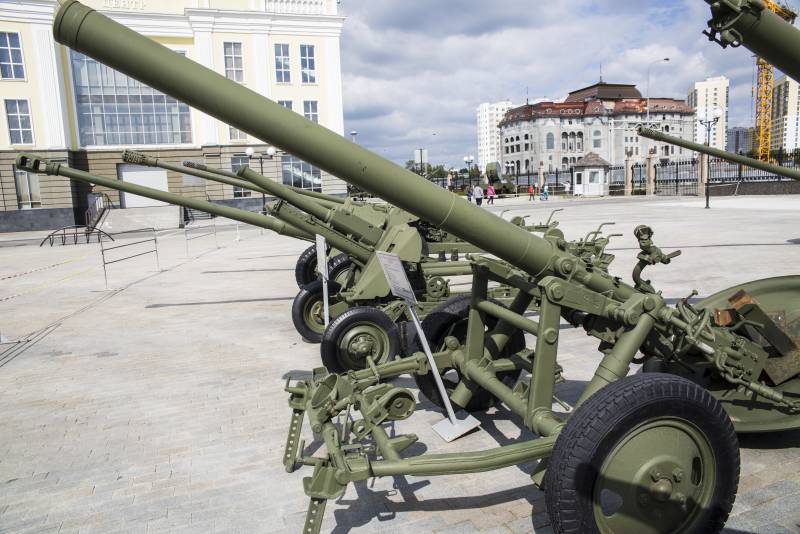
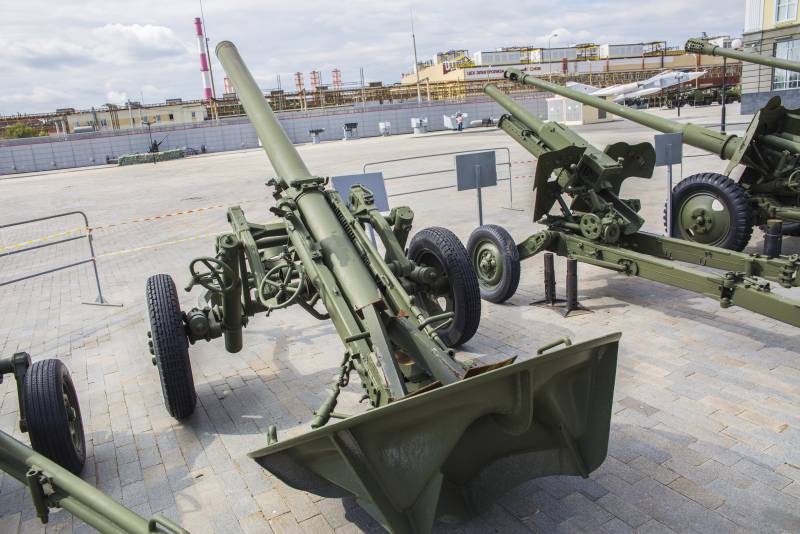
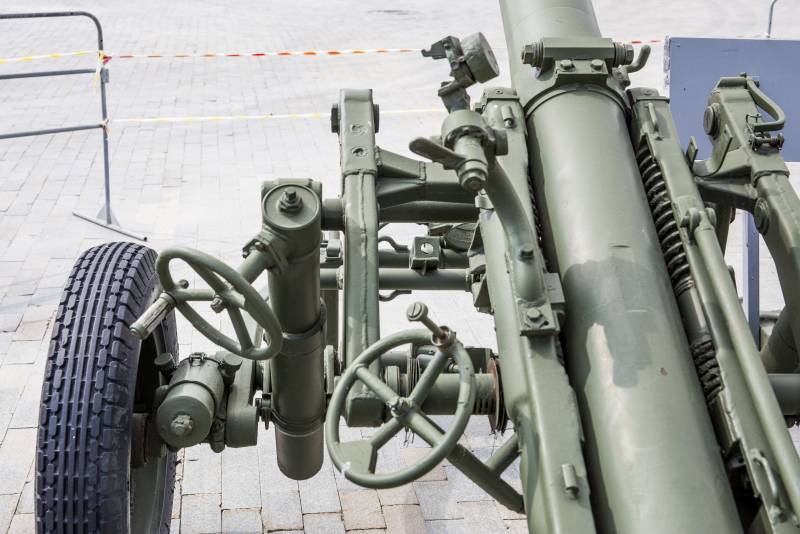
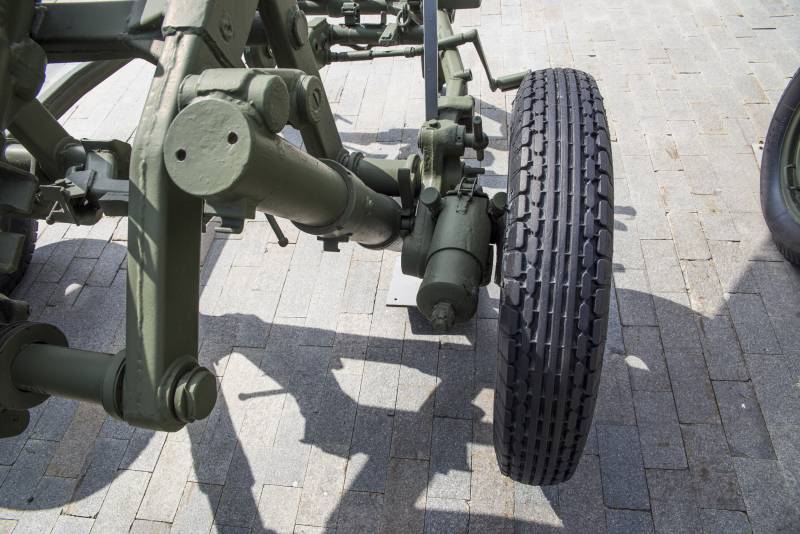
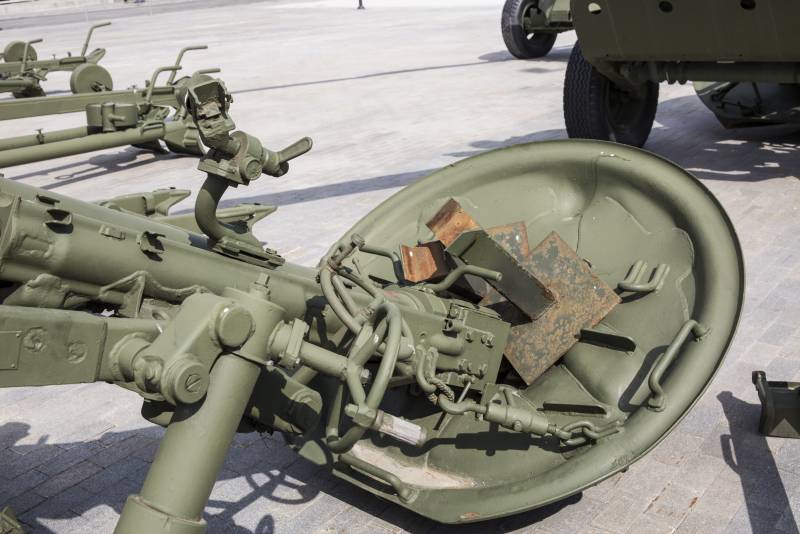
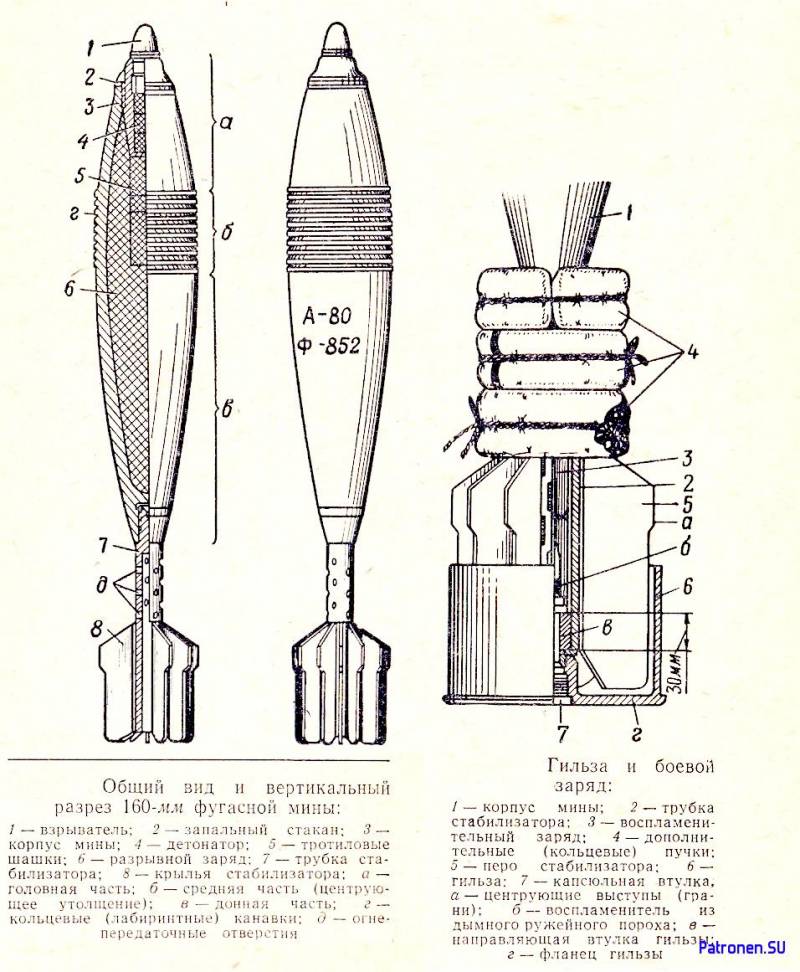
Information